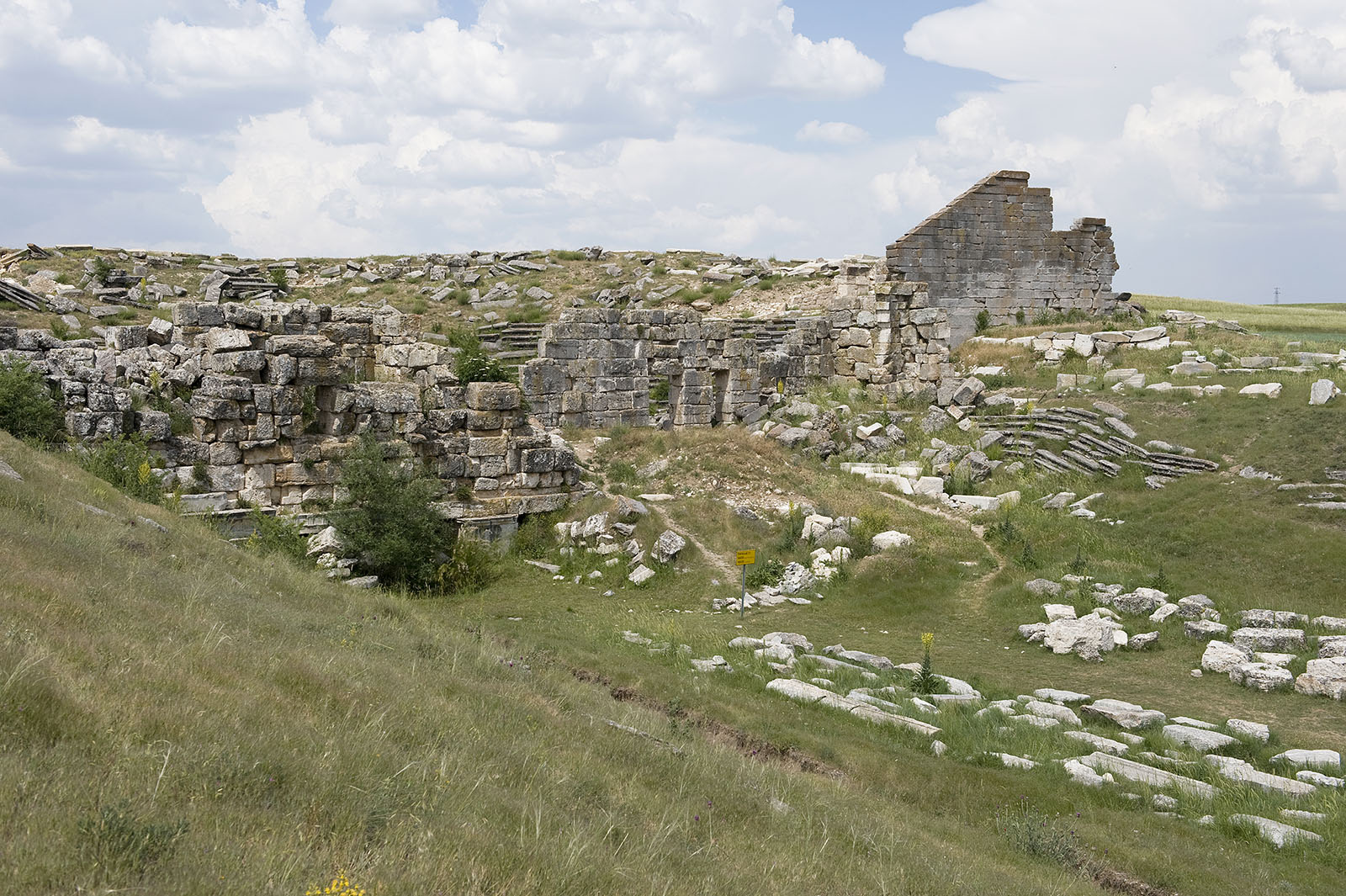Images from Wikipedia
The images seen below are from Wikipedia and were obtained under license,
which allows for their legal use on Wikipedia and other websites.
 Attribution: Dosseman, with CC BY-SA 4.0 license, original file:Aizanoi_Macellum_june_2008_2342.jpg , Wikipedia
Attribution: Dosseman, with CC BY-SA 4.0 license, original file:Aizanoi_Macellum_june_2008_2342.jpg , Wikipedia
Probably as a macellum (food market) a round structure was built in the second half of the second century AD. A pricelist from the 4th century on its sides, put there on orders of Emperor Diocletian to fight inflation. All prices of the commodities sold on markets throughout the empire were indicated. A strong male slave would go for 30.000 dinar, twice the amount for a donkey. Nowadays this list is seen as an indication the market held the first “exchange commodity” or “borsa” (comp. Fr. Bourse).
 Attribution: Dosseman, with CC BY-SA 4.0 license, original file:Aizanoi_Theatre_june_2008_2290.jpg , Wikipedia
Attribution: Dosseman, with CC BY-SA 4.0 license, original file:Aizanoi_Theatre_june_2008_2290.jpg , Wikipedia
The theatre is some 100 m wide and could hold 20000 people. Although dating from the second half of the 2nd century AD (Roman era), it has an ‘auditorium’ (seating section) in Greek-hellenistic style, that exceeds the semicircular form which was the usual Roman lay-out. The theatre stage was richly decorated with marble. The remains are still in place (and in a jumble because of the many earthquakes that hit it).
Next to the theatre there is the stadium, whose major (length) axis is an extension of the theatre’s axis of symmetry. The stage building of the theatre was also the northern wall of the stadium, making both buildings strongly connected to each other. This specific combination is unique in the antique world.
Note that in antique times, the stadium was not visible from within the theatre (as it is now), since the stage building (19 m in height) blocked the view.
Sources: ‘Anadolu Uygarlıkları’ (Anatolian Civilisations) – Prof. Dr. Ekrem Akurgal. ‘Antik Stadyumlar’ – Secda Saltuk (Istanbul 1995).
 Attribution: Dosseman, with CC BY-SA 4.0 license, original file:Aizanoi_Zeus_temple_2120.jpg , Wikipedia
Attribution: Dosseman, with CC BY-SA 4.0 license, original file:Aizanoi_Zeus_temple_2120.jpg , Wikipedia
In front of the temple, formerly part of the acroterion , stands a big bust of a female. It seems to have been her that led to the conclusion the temple was dedicated to both Zeus and Sibyl.
 Attribution: Dosseman, with CC BY-SA 4.0 license, original file:Aizanoi_june_2008_2272_10.jpg , Wikipedia
Attribution: Dosseman, with CC BY-SA 4.0 license, original file:Aizanoi_june_2008_2272_10.jpg , Wikipedia
At the south end of the stadium: various honorific inscriptions (in Greek, one mentioning M. Apuleius Eurykles) and stylised laurel wreaths celebrating the winners of sports games held in the stadium. Roman era, 2nd or 3th century AD.









